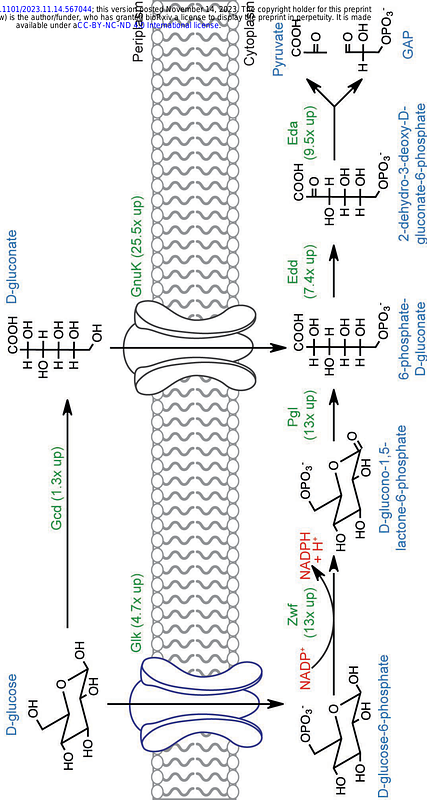Characterization of the Entner-Douderoff Pathway in Pseudomonas aeruginosa Catheter-associated Urinary Tract Infections

Characterization of the Entner-Douderoff Pathway in Pseudomonas aeruginosa Catheter-associated Urinary Tract Infections
El Husseini, N.; Mekonnen, S. A.; Hall, C. L.; Cole, S. J.; Carter, J. A.; Belew, A. T.; El-Sayed, N. M.; Lee, V. T.
AbstractPseudomonas aeruginosa is an opportunistic nosocomial pathogen responsible for catheter-associated urinary tract infections (CAUTI). In a murine model of P. aeruginosa CAUTI, we previously demonstrated that urea within urine suppresses quorum sensing and induces the Entner-Douderoff (E-D) pathway. The E-D pathway consists of the genes zwf, pgl, edd, and eda. Zwf and Pgl convert glucose-6-phosphate into 6-phosphogluconate. Edd hydrolyzes 6-phosphogluconate to 2-keto-3-deoxy-6-phosphogluconate (KDPG). Finally, Eda cleaves KDPG to glyceraldehyde-3-phosphate and pyruvate, which enters the citric acid cycle. Here, we generated in-frame E-D mutants in strain PA14 and assessed their growth phenotypes on chemically defined media. These E-D mutants have a growth defect when grown on glucose or gluconate as sole carbon source which are similar to results previously reported for PAO1 mutants lacking E-D genes. RNA-sequencing following short exposure to urine revealed minimal gene regulation differences compared to the wild type. In a murine CAUTI model, virulence testing of E-D mutants revealed that two mutants lacking zwf and pgl showed minor fitness defects. Infection with the pgl strain exhibited a 20% increase in host survival, and the zwf strain displayed decreased colonization of the catheter and kidneys. Consequently, our findings suggest that the E-D pathway in P. aeruginosa is dispensable in this model of CAUTI.